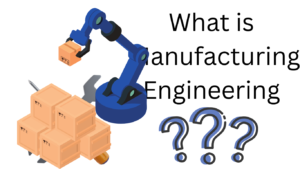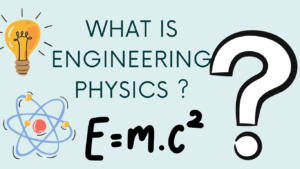Introduction to Machine Design
Machine design is a fundamental engineering discipline that focuses on developing mechanical systems, devices, and components. It integrates engineering principles, material science, and manufacturing techniques to create efficient and reliable machines. From designing engines to simple gear mechanisms, machine design is vital across various industries.
Fundamentals of Machine Design
Basic Principles
Machine design is based on key principles such as:
- Strength and durability
- Efficiency and performance
- Ease of maintenance
- Cost-effectiveness
Factors Affecting Machine Design
Several factors influence the design process, including:
- Load and stress analysis – Ensuring the structure withstands forces
- Material properties – Selecting suitable materials for longevity
- Manufacturing processes – Optimizing production methods
- Economic constraints – Balancing cost and performance
Engineering Materials Used
Material selection plays a crucial role in machine performance. Common materials include:
- Metals: Steel, Aluminum, Titanium
- Polymers: Nylon, ABS, Polycarbonate
- Composites: Carbon fiber, Fiberglass
Types of Machine Design
1. Adaptive Design
Modifying existing designs to improve performance or adapt to new conditions (e.g., upgrading machinery for higher efficiency).
2. Developmental Design
Building upon an existing product while introducing significant improvements, such as enhanced strength or reduced weight.
3. New Design
Creating entirely new machines from scratch, requiring extensive research and testing.
Steps in the Machine Design Process
- Identifying Requirements – Understanding operational needs and performance expectations.
- Conceptual Design – Developing initial ideas and feasibility sketches.
- Detailed Design – Creating precise engineering drawings and selecting materials.
- Prototype Development – Building a working model for performance testing.
- Testing and Validation – Conducting stress tests, simulations, and real-world evaluations.
Important Considerations in Machine Design
1. Strength Considerations
Machines must withstand forces and loads without structural failure.
2. Cost Efficiency
Balancing cost and performance is crucial for a commercially viable product.
3. Durability and Reliability
Ensuring long-lasting performance under diverse operating conditions.
4. Environmental Impact
Incorporating sustainable design practices, such as using recyclable materials and energy-efficient components.
Machine design plays a key role in engineering innovation, ensuring machines function efficiently, safely, and sustainably across industries.
importance.
Mechanical Components in Machine Design
Shafts and Bearings
Shafts transmit motion, while bearings support rotating parts and reduce friction.
Gears and Gear Trains
Gears transfer power efficiently and are essential in many machines.
Springs and Fasteners
Used for shock absorption and secure assembly of components.
Modern Trends in Machine Design
CAD and CAM Integration
Computer-aided design (CAD) and computer-aided manufacturing (CAM) streamline the design and production process.
3D Printing in Prototyping
Additive manufacturing allows for rapid prototyping and design testing.
Artificial Intelligence in Design Optimization
AI-driven design tools enhance efficiency and innovation by automating optimization tasks.
Challenges in Machine Design
Cost Constraints
Budget limitations can impact material selection and manufacturing methods.
Material Selection
Choosing the right material is crucial for balancing strength, cost, and weight.
Safety Regulations
Compliance with industry standards ensures machine safety and reliability.
Applications of Machine Desighttps://nobleswift.com/introduction-to-fluid-mechanics/n
Automotive Industry
Used in engine components, transmission systems, and suspension design.
Aerospace Engineering
Essential for designing aircraft structures and propulsion systems.
Robotics and Automation
Critical in developing industrial robots and automated machinery.
Case Study on Machine Design
Example of a Successful Machine Design
The Tesla electric motor is a prime example of innovative machine design, focusing on efficiency and sustainability.
Lessons Learned
- Integration of AI enhances optimization
- Use of lightweight materials improves performance
- Sustainability is becoming a crucial factor
Conclusion
Machine design is a fundamental aspect of engineering that influences multiple industries. By understanding the principles, types, challenges, and trends, engineers can create efficient and reliable machines. With advancements like AI and 3D printing, the future of machine design looks promising.
For more information contact please




Pingback: Technical Communication - nobleswift.com
Hi Good morning
How are you doing